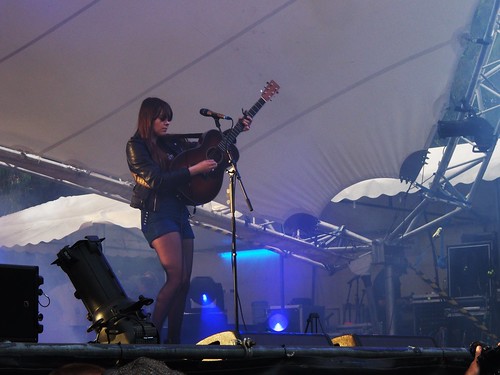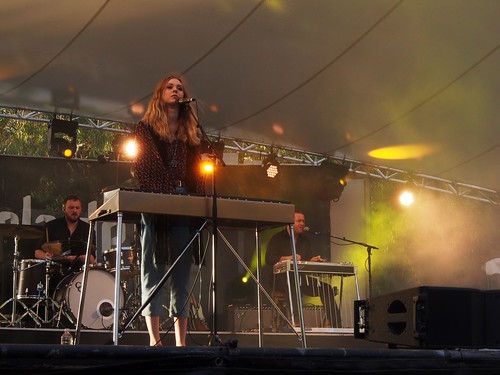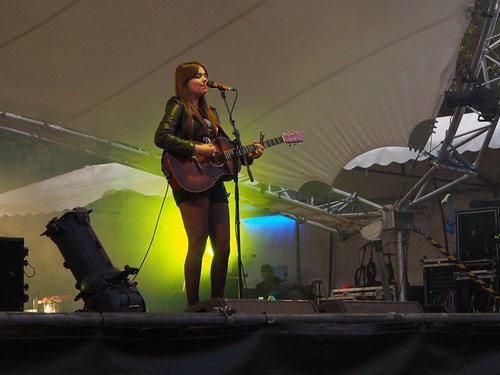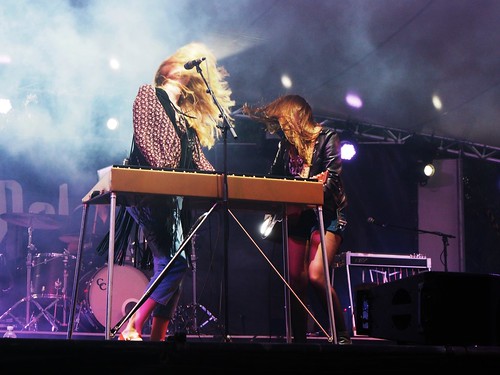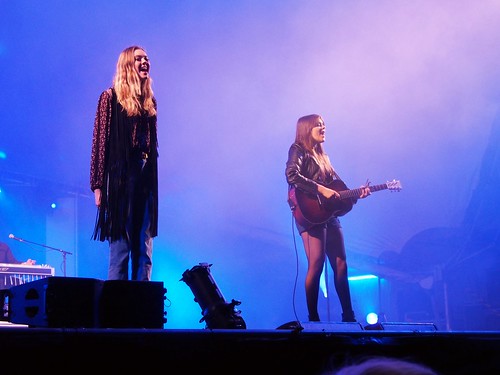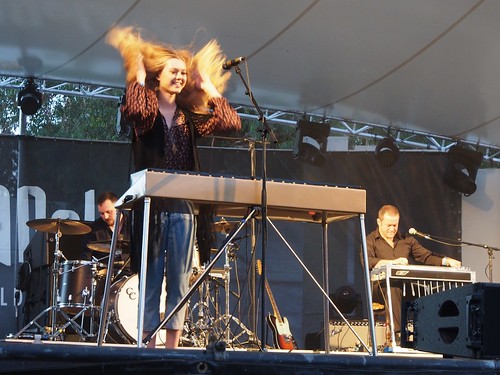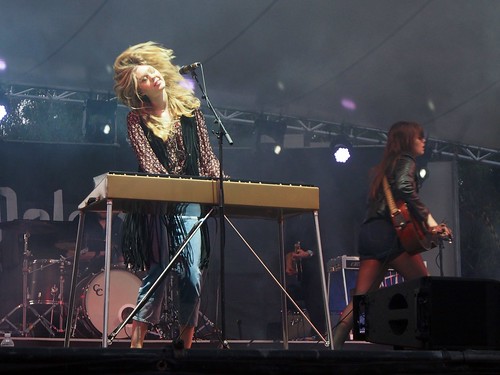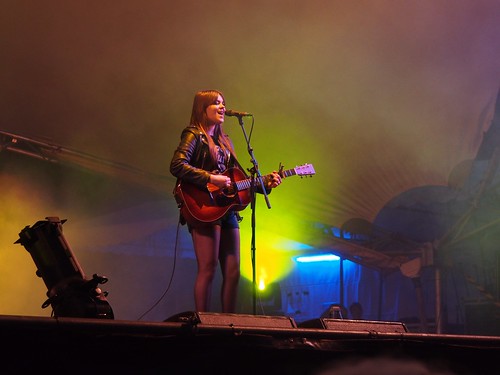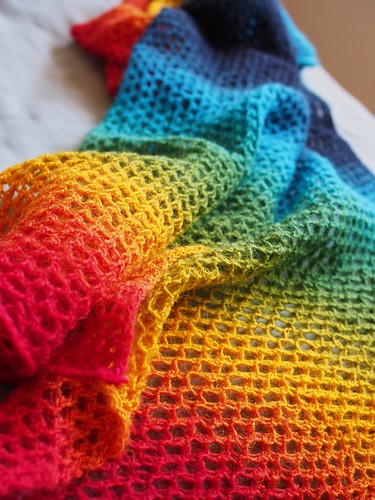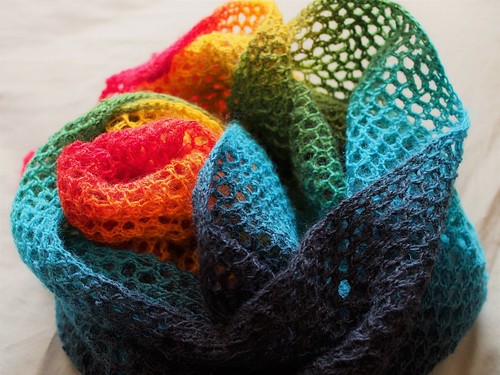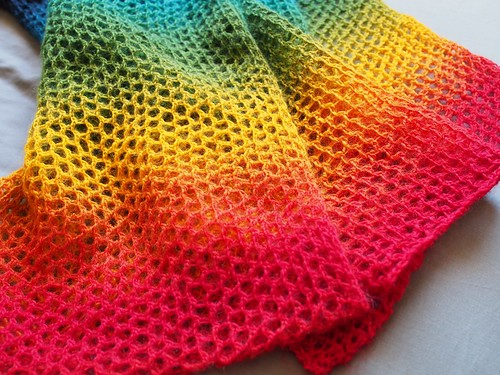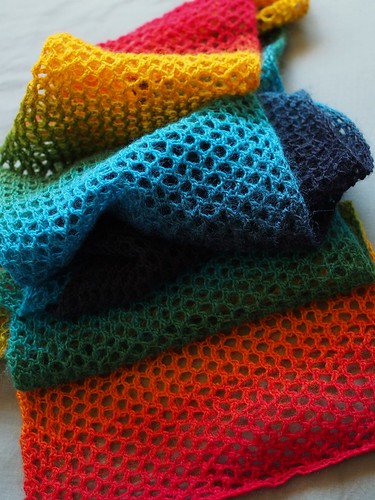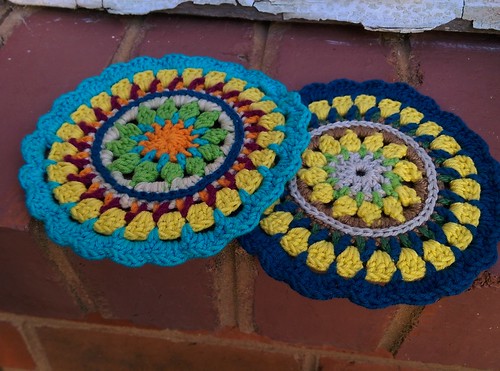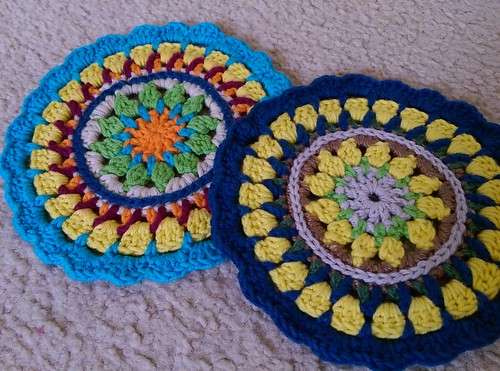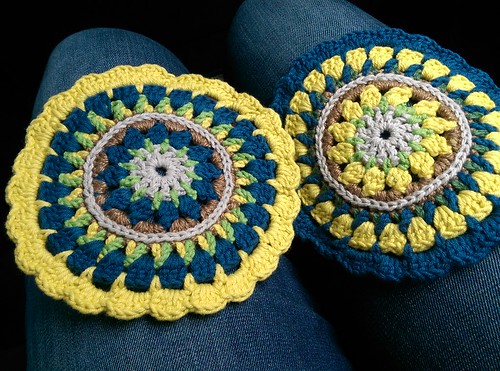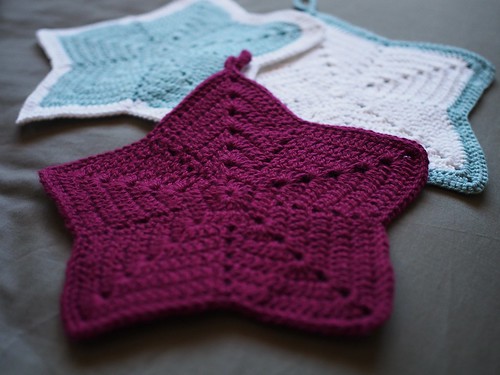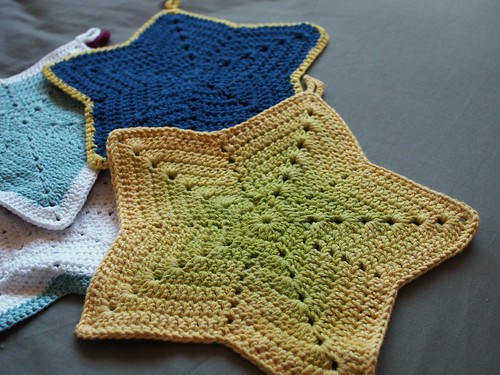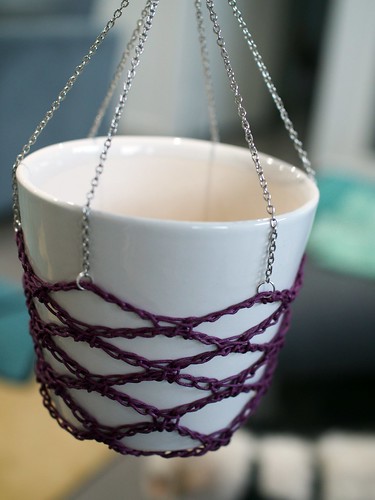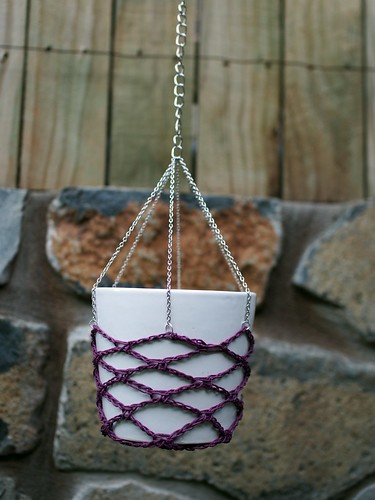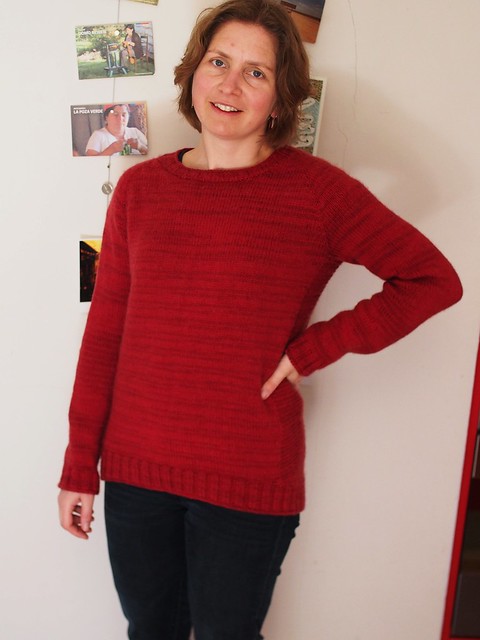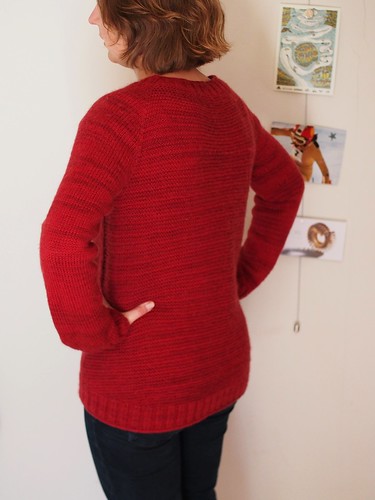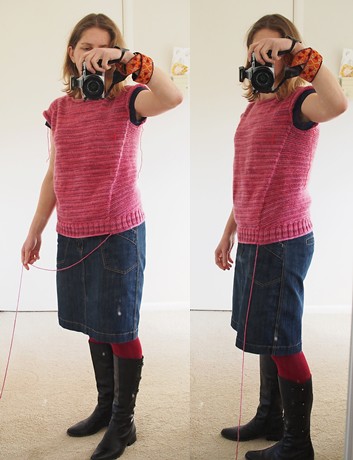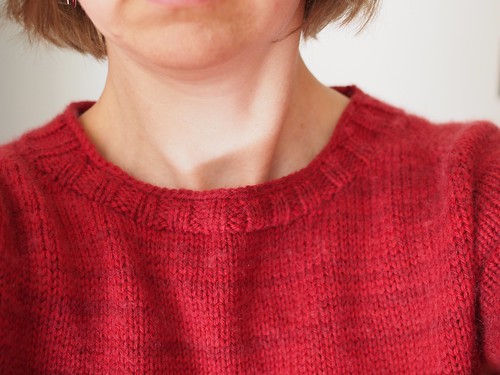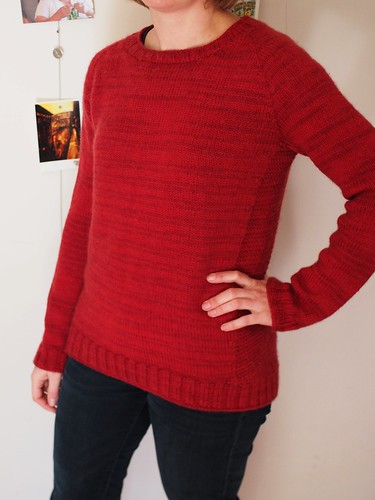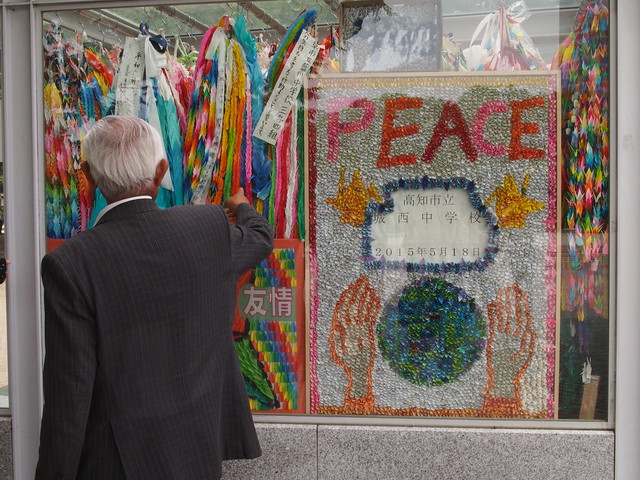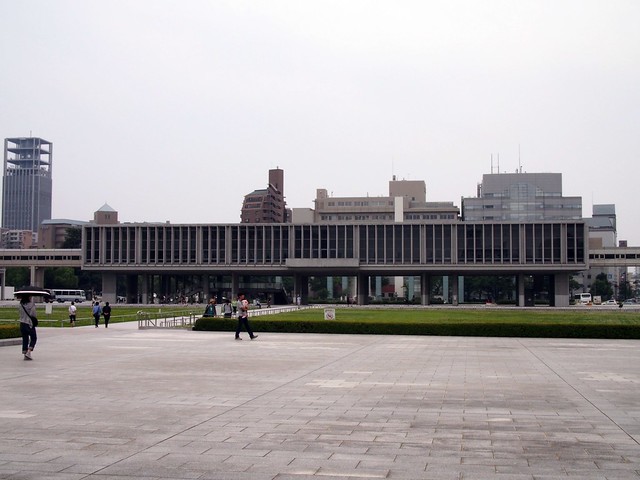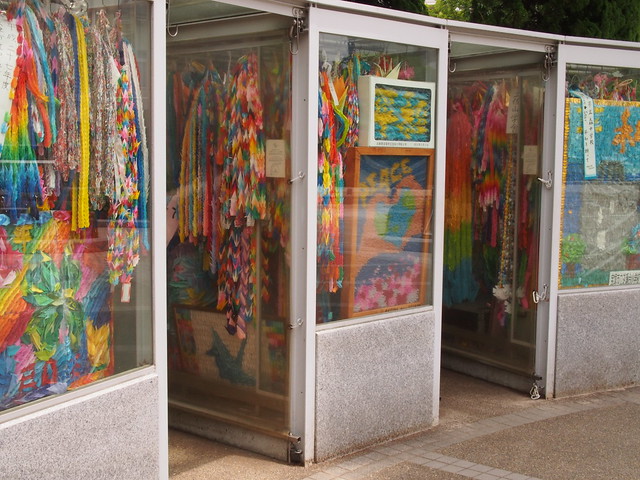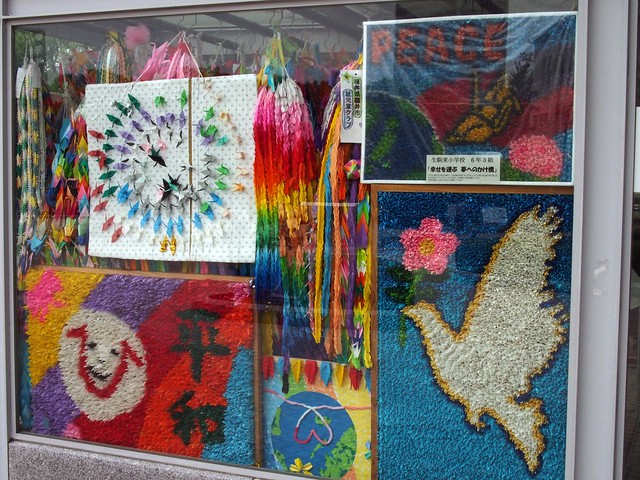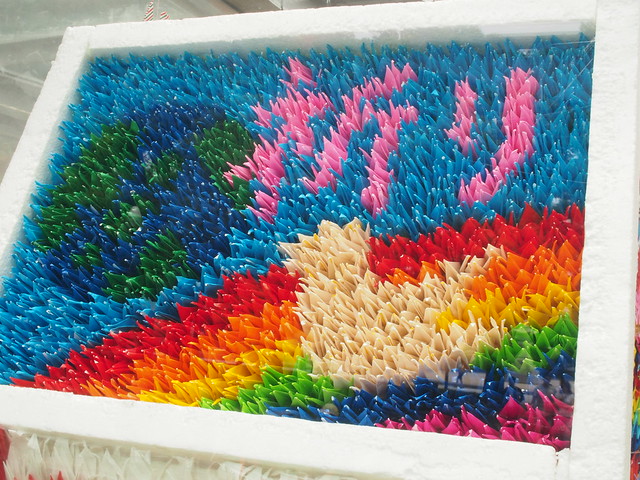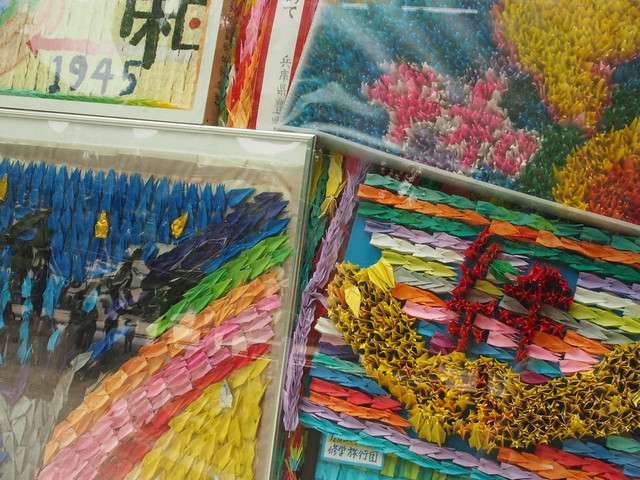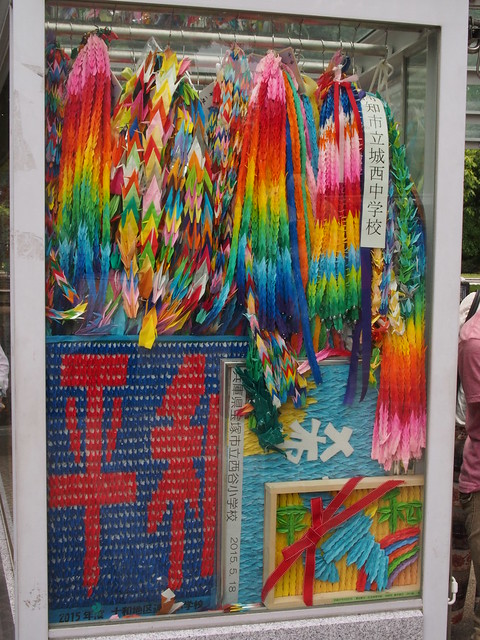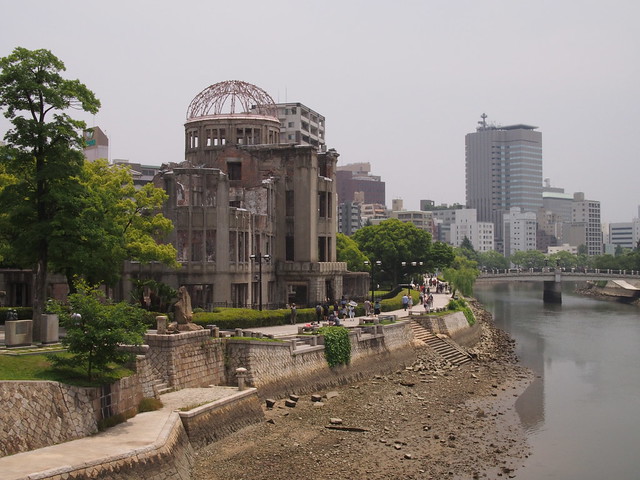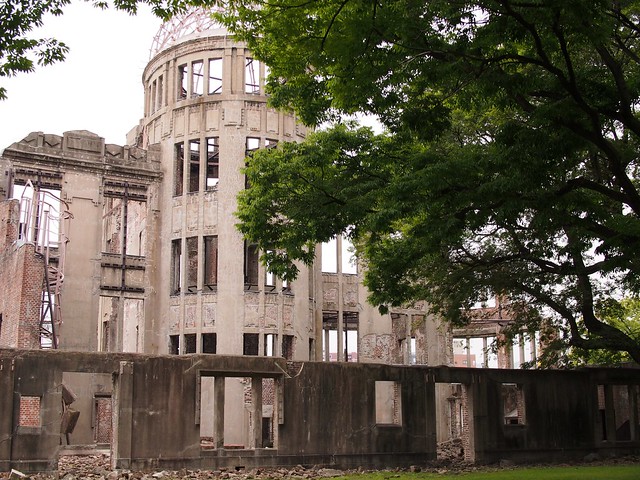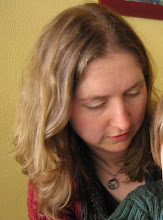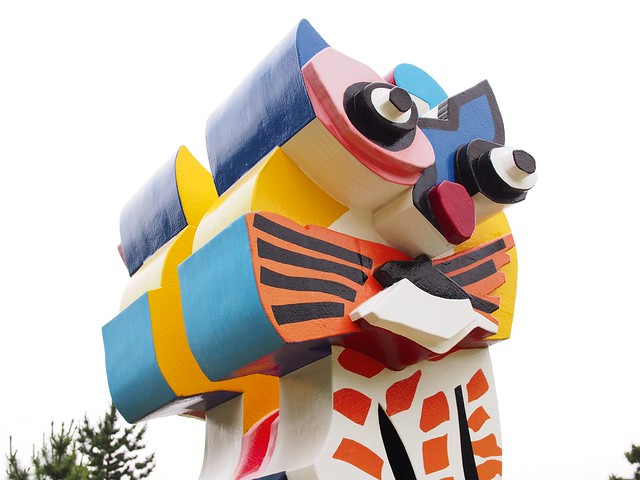
When we were planning our two weeks in Japan, one thing we all agreed on right away was that we had to visit
Naoshima. An island, with modern art all over the place? Considering we all love
MONA, and the
Sydney Biennale a few years ago, this sounded like it had to be a win.
No apologies - this post is going to have a lot of photos. And that's without really any photography inside any of the museums and other buildings.
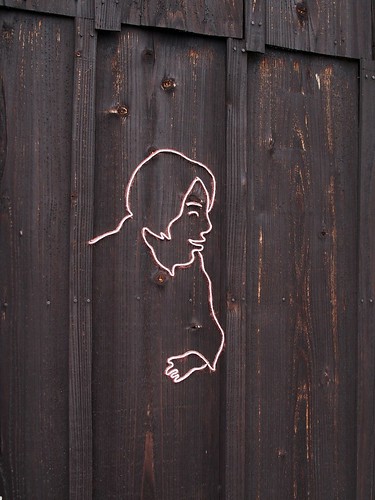
We arrived by ferry from Uno into the main port, Miyanoura, and then took a taxi to the village of Honmura where we were to stay for two nights. As this was one stop on our small tour through selected parts of Japan (Tokyo-Kyoto-Hiroshima-Naoshima-Tokyo), naturally we had all our luggage with us. My suitcase is quite small really but I still felt self-conscious, as other visitors and tourists arriving on the ferry seemed to have small weekend packs only. I probably pay too much attention to these things.
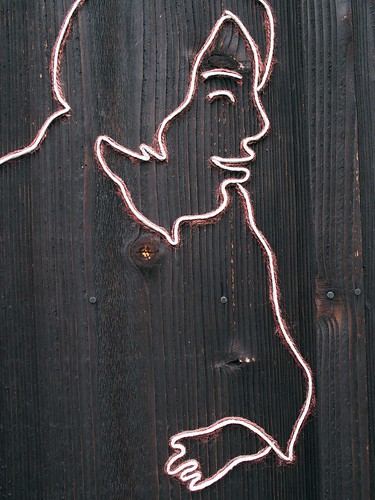
Once we had found our B&B style accomodation (friendly people and basic facilities - a nice big room for us to share, and even a washing machine and hanging space outside! My jeans finally got a wash) and settled in, it was time to find dinner. So no serious art-hunting that day.
There are a number of art galleries on the island and with only one full day to really look around, we made it through just a couple of them. There are also a lot of outdoor works/sculptures - from charming more modest things like this string art found throughout Honmura, to massive pieces by international artists like 'Frog and Cat' by Karel Appel - pictured at the top of this post.
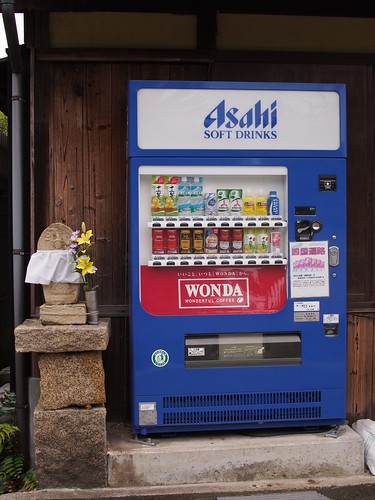
This kind of juxtaposition is not at all unique to the island. Vending machine next to shrine, vending machine next to absolutely anything actually.
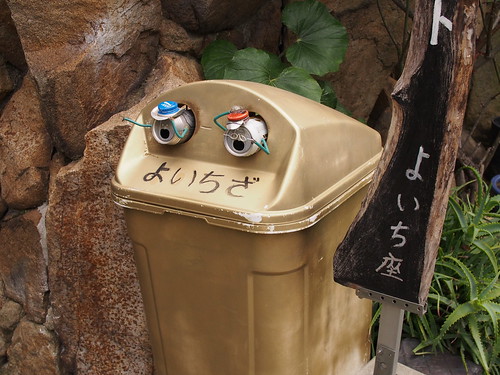
There were little cute touches like this around Honmura. Not sure if this bin is functional, but cute so who cares!
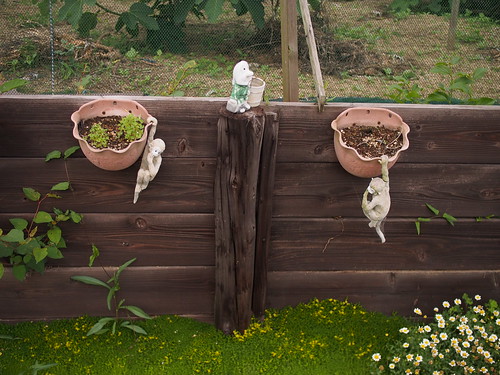
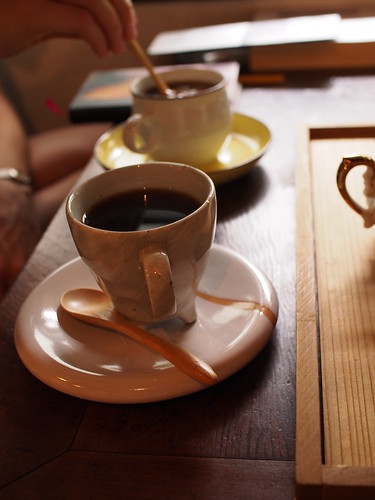
We started out in the morning by exploring Honmura, hunting for each of the houses in the
Art House Project. Of course we also stopped for essential morning coffee in one of the tiny unexpected cafes found halfway down a small street.
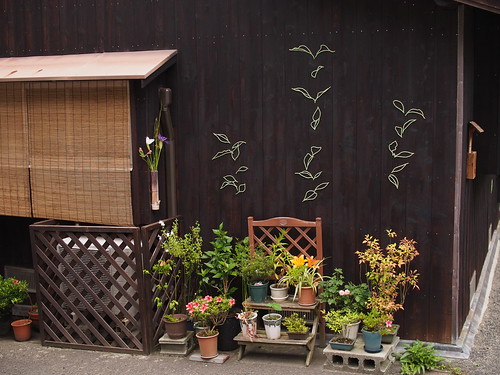
The Art House project involves artists converting empty houses into works of art (and spaces for works of art). Most of them are old houses that have been unoccupied for a long time, as the island gradually lost a lot of its population. 'Minamidera' - no photo, sorry - was custom built to house a James Turrell work. Turrell is one of several major artists that have a close relationship with Naoshima and some other art islands nearby. Though I liked a lot of the Turrell works I saw in the recent
Retrospective at the National Gallery and I love the skyspace '
Within Without' permanently installed there, this one didn't really do it for me. You line up and then shuffle into a pitch dark space, waiting several minutes for your eyes to adjust and for a faint light form to appear. I may have been feeling impatient that day? Maybe it was too subtle and meditative for me....
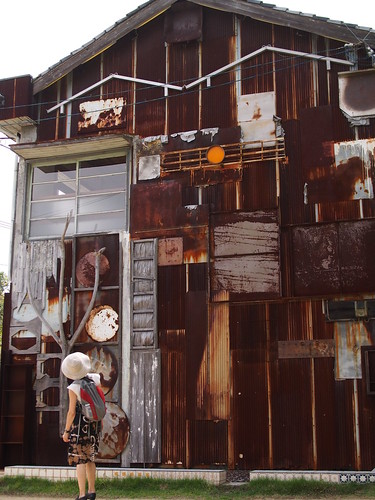
This one I really liked. 'Haisha' is the former residence and office of a dentist, converted and decorated thoroughly inside and out by Shinro Ohtake. Can't remember for sure but I think photos weren't allowed inside.
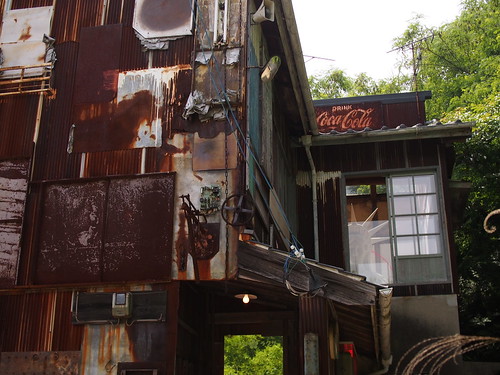
Which is a shame, because there is a two-story statue of liberty in there.
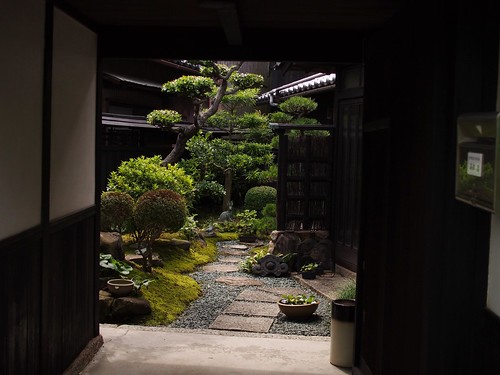
Not part of the Art House project - just a private semi-hidden garden. After seeing at least one charming enough house with a 'no photography' sign, presumably a resident who'd had enough of gawking tourists, I felt slightly sneaky taking this shot even though there was no sign here expressly forbidding me.
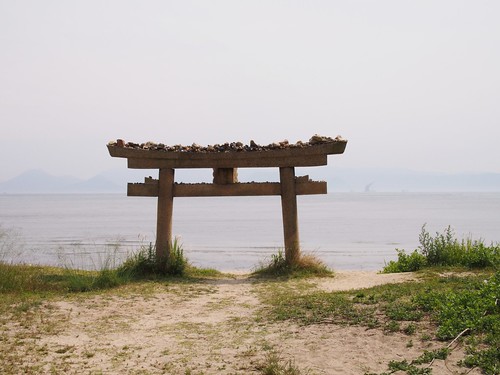
Naoshima is quite small and all of it is quite accessible on foot. There are also bikes for hire all over the place. After we explored Honmura and the Art House Project for the morning, my sister took herself off for a bike ride and Mum and I took a short bus ride towards the Bennesse House Museum. The large, sprawling site around the museum has several sculptures and installations.
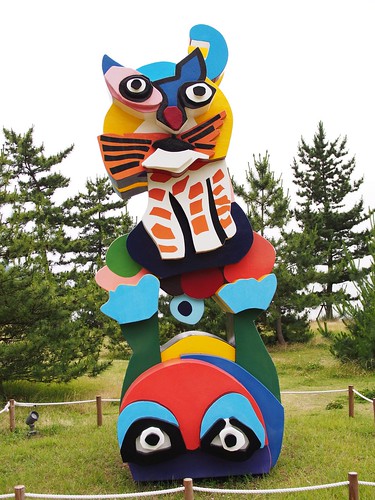
'Frog and Cat', Karel Appel
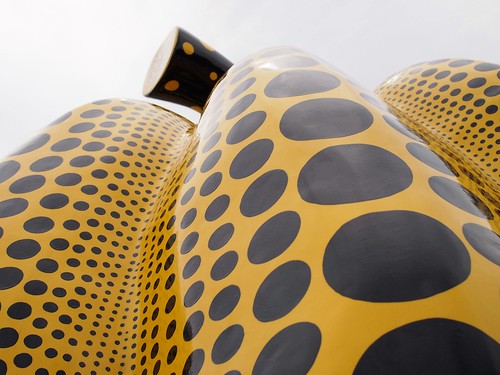
Pumpkin by Yayoi Kusama
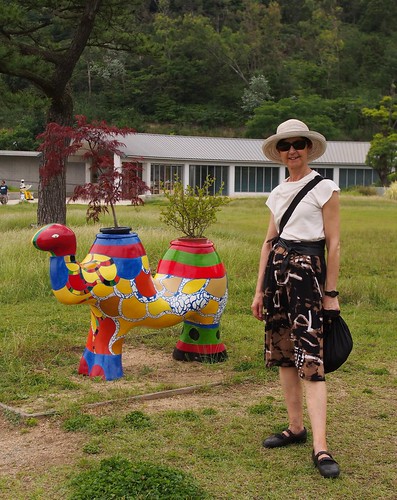
I don't have the name of the artist who made this double-planter sculpture, but standing in front is my lovely mum.
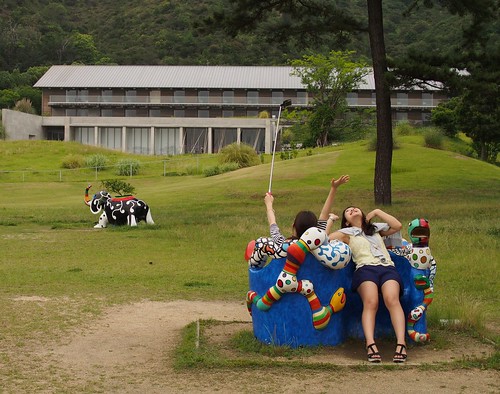
Selfie stick
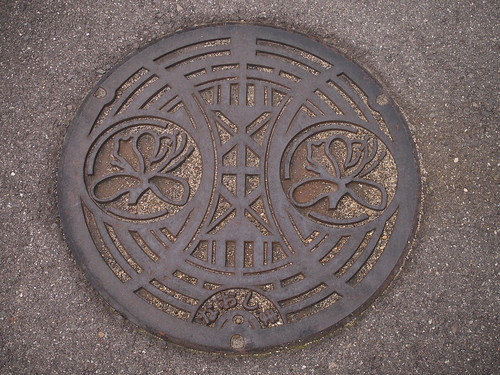
Honmura drain cover to add to my modest collection.
The Bennesse House Museum was fantastic - a pleasant building to be in and move through, and an impressive collection of modern art.
In the evening we all wanted to visit another Shinro Ohtake work, the communal bathhouse, 'I Love Yu' a pun based on the Japanese character used here for 'yu'). This deep into our stay in Japan, we had had a couple of bathing experiences with various elements of awkwardness and thought by now we knew what we were doing. However. The people working here didn't exactly make it easy. First we got there and learned that even though there was a person at the counter, you had to buy an entry ticket using a vending machine. The person on the desk kindly told us this, though he seemed to think our floundering around was pretty funny. It would have been nice if he had also mentioned that you had to bring your own towel. Other bathhouses we had used - including one very large commercial one in Tokyo and one at the ryokan in Kyoto - provided towels. It wasn't until we were all in the bath that we realised there weren't any towels. We had to draw straws to see who would be the one to get dry and dressed, go back out to the entrance and buy three very small souvenir towels.
So that was a bit weird, given that it was clearly a tourist attraction, part of the art trail and not just a traditional bath house that would be mostly patronised by locals. I guess there might be a bit of tension in some quarters between locals and the 'art world' that has descended on their island. There seemed to be gentle laugh being had at our expense.
In any case the bathhouse is small but pretty
spectacular (worth clicking to have a look - I didn't get any good photos outside and obviously you don't take photos inside). The men's and women's sides are separated by a wall with an elephant on top. On certain days the sides are switched so that everyone gets a chance to view the elephant from the other side.
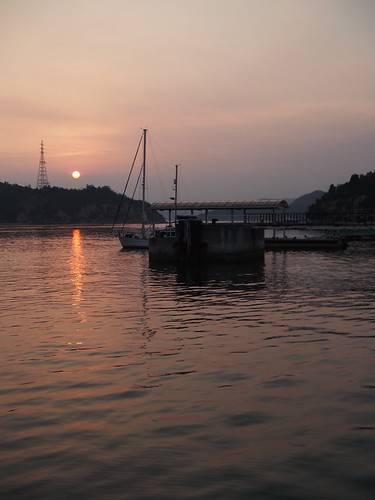
Miyanoura Harbour was beautiful in the evening light, and also quite lovely the next day when we returned for our ferry back to the mainland.
It was absolutely worth visiting Naoshima, we had a great time. If it went back I would try to time it for the
Setouchi Triennale - maybe in 2019?

